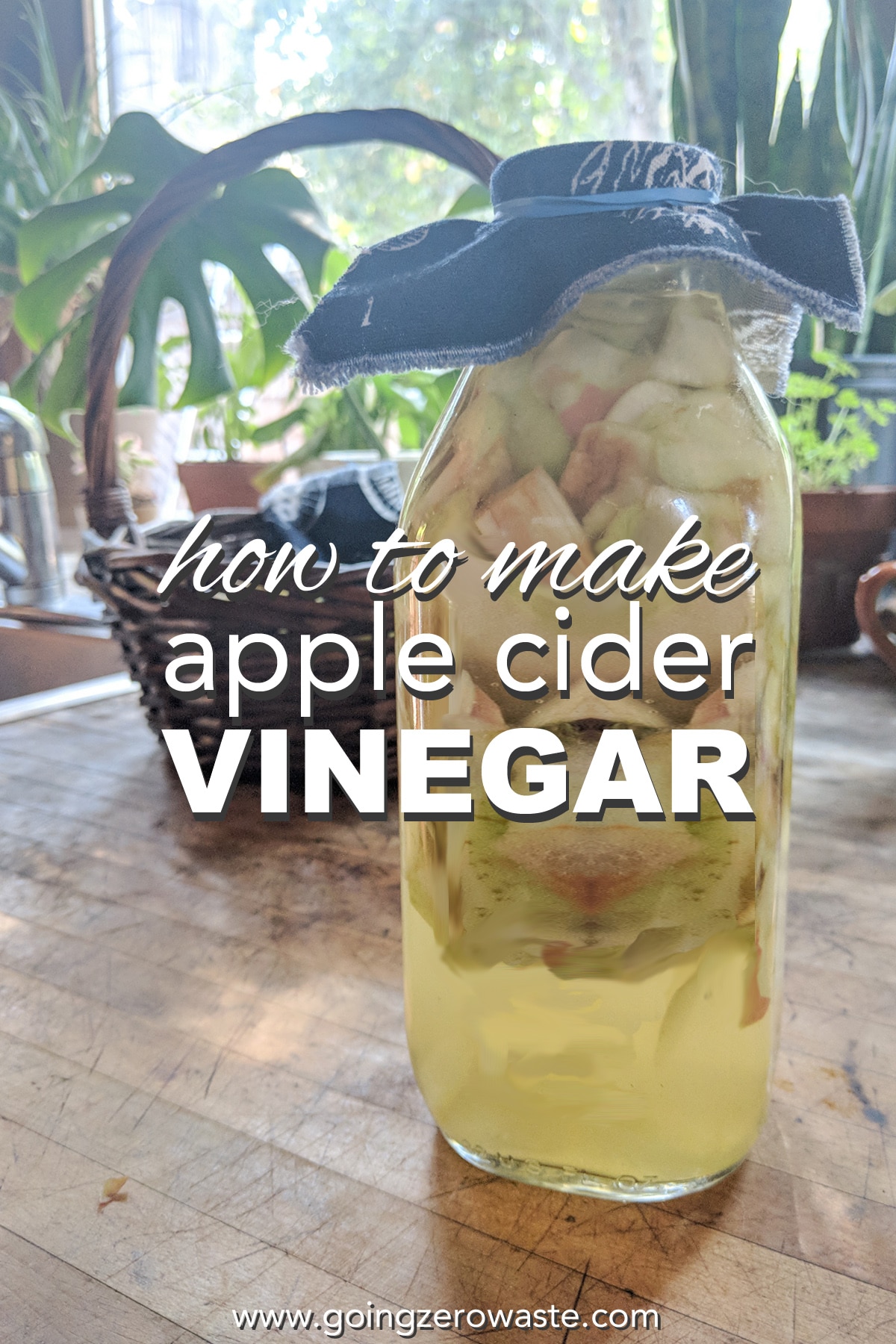[ad_1]
Last Updated on October 24, 2024
Learn how to make apple cider vinegar using scraps to save waste and use what you already have. There are many uses for homemade vinegar, and it’s very inexpensive!
Homemade apple cider vinegar is easy to make and takes minimal effort. We will go over how to make the best apple cider vinegar and will answer all your questions like, “can apple cider vinegar go bad?”
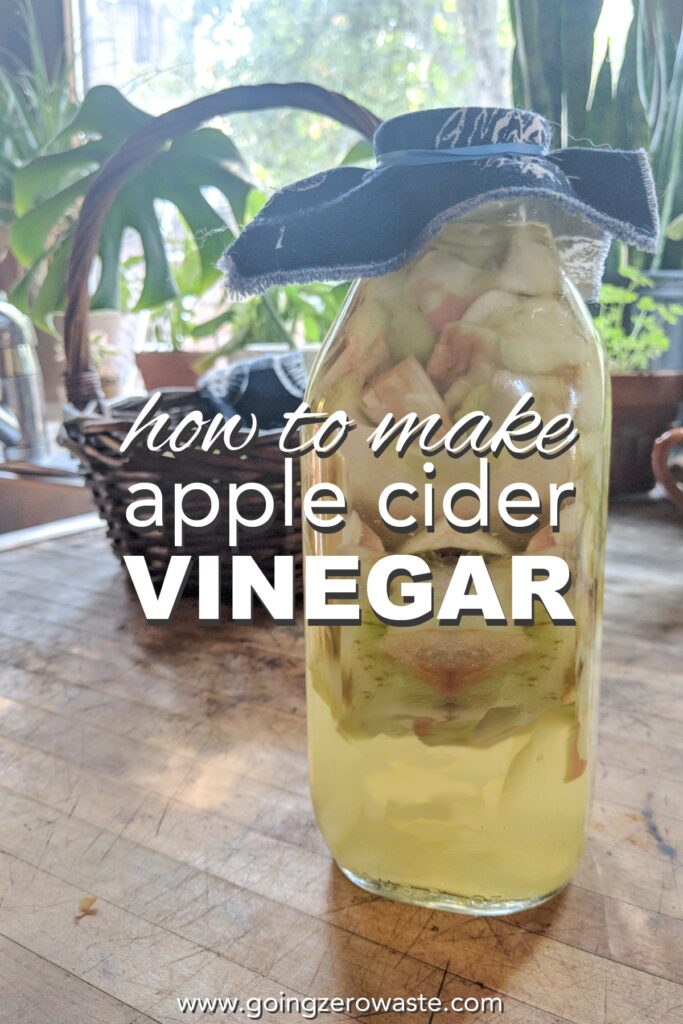

best apple cider vinegar
Remember that apple sauce recipe from a while back? Well, I hope you saved your peels and cores because now it’s time to make some homemade apple cider vinegar!
Yes, you can actually make homemade vinegar. I know it sounds wild, but it’s honestly a piece of (apple) cake!
homemade apple cider vinegar:
I’ve been making homemade apple cider vinegar for over five years now. It’s SO easy and SO cheap. There are a few different ways that you can do it. You can use a whole apple that’s been chopped and chunked, or you can use the peels and cores!
I personally prefer to use peels and cores because it’s a great way to use up food that would otherwise be going to the compost bin.
Don’t get me wrong, composting is great! I’m a big fan and think it’s incredibly important. You can read more in a few of my composting blog posts:
But, it’s always better to make use of your scraps before they hit the bin. Keep those resources in play for as long as possible and save some money too.
Because when a ‘waste’ product becomes something delicious and yummy – that’s MY kind of recipe! Plus, your pocketbook will thank you too.
If you’re looking for more recipes that utilize scraps, check out this blog post full of ideas for cooking with food scraps or grab my latest book 101 Tips for a Zero Waste Kitchen! It focuses on easy recipes that fight food waste in the kitchen!
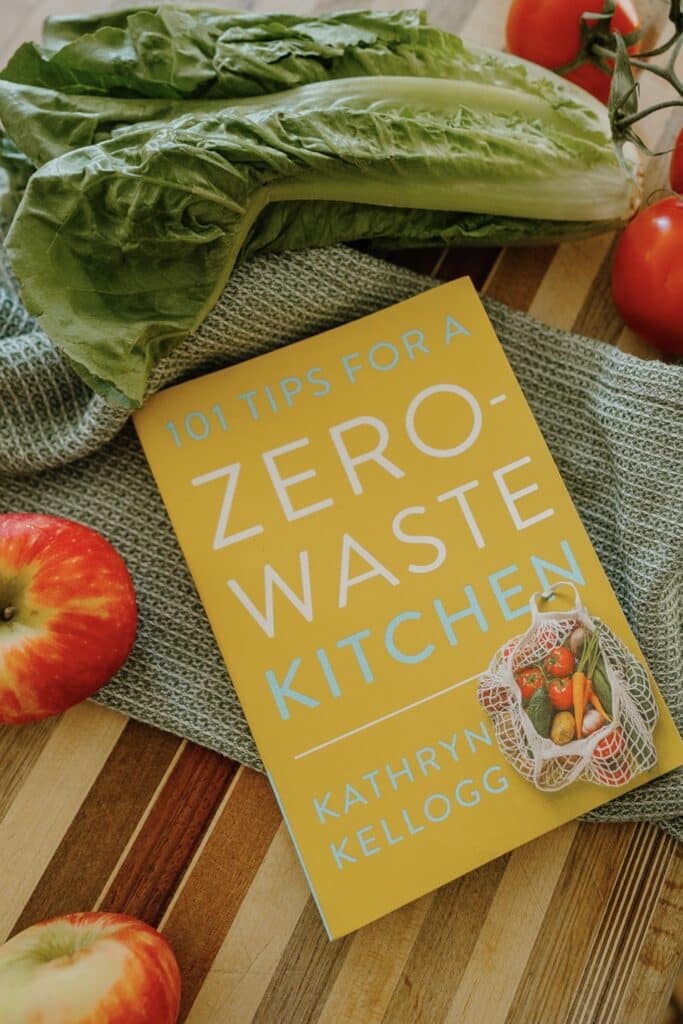

homemade vinegar
the tools:
- You need to make sure that you’re using a very clean quart sized jar!
- rubber band
- swatch of cloth
homemade vinegar ingredients:
- 2 cups of apple peels and cores
- 2 tablespoons of sugar
- 3 cups of filtered water
how to make apple cider vinegar:
- place the apple pieces in the glass jar
- fill the jar with filtered water
- add in the sugar and shake until it dissolves
- cover the jar with the swatch of cloth and a rubber band
- let the jar sit in a dark place for about 3-4 weeks
- stir it occasionally and make sure that the apple pieces are fully are submerged
- after 3-4 weeks, strain out the apple pieces and compost
- leave the liquid in the jar for another 3-4 weeks
- then it’s ready to use!
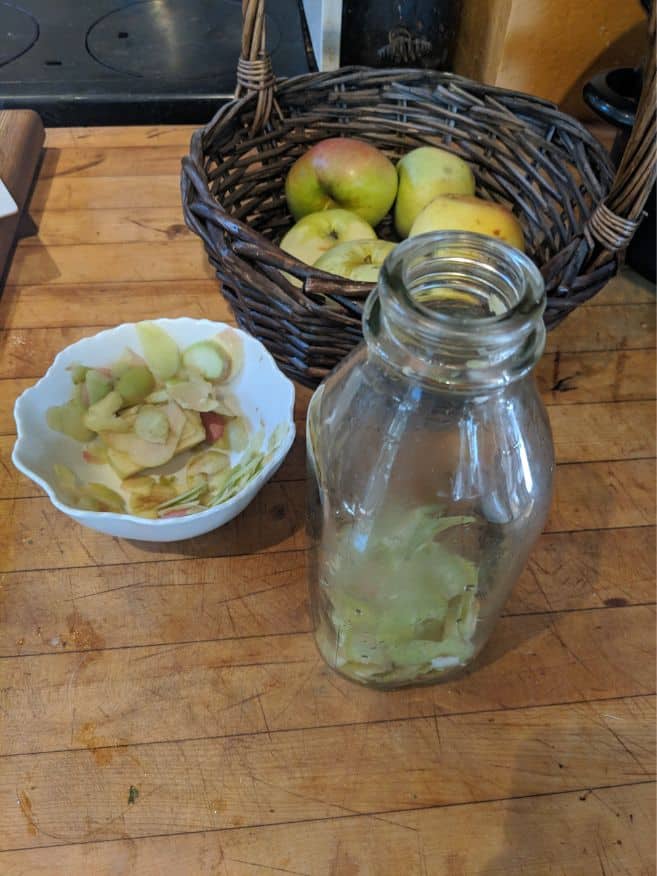

homemade apple cider vinegar FAQ:
I have a full video tutorial on my instagram that you can watch, and I’m answering some of the most common questions here.
does it matter what kind of apples you use?
You can use any type of apple — in fact; you could even use a different fruit altogether. You could make a pear cider vinegar, pineapple, persimmon, fig, or anything your heart fancies.
Depending on the sugar content of the fruit, you might just need to add a little bit more to your homemade apple cider vinegar starter.
do you have to use sugar when making apple cider vinegar?
Sugar is a very important part of the fermenting process. One of the comments on my instagram post explained the process so well, that I’m going to quote them. “To make vinegar, you first need to make an alcohol – so the sugar is there so that the yeasts on the apple cores can consume it to create an apple cider, and then bacteria converts that alcohol to acetic acid, making a vinegar.
“You technically could do it without the sugar, but you’d need to make the sugar in the apples much easier to access (probably by juicing them) in order for the yeasts to colonize your solution faster than mold spores could. Refined sugar is very accessible food for yeasts (but not molds or bacteria), so adding it has a preservative effect and gives the yeast a head start and reduces the chance that molds or pathogenic bacteria will colonize your solution before it ferments!” – Chel-z Birch Wyse
can you use honey instead of sugar?
I tried using honey to make a batch of apple cider vinegar, and it didn’t go super well. I’ve heard it’s possible, but it’s a much longer process. It works so much better with the sugar, so even if you’re in a very low sugar household like we are, it’s worth getting some!
I’d borrow half a cup from a friend / family member or just get a scoop from your local bulk bin. That’s certainly one benefit of buying without a package — you can get exactly what you need. For more info on bulk bins, check out my blog post The Ultimate Guide to Zero Waste Grocery Shopping.
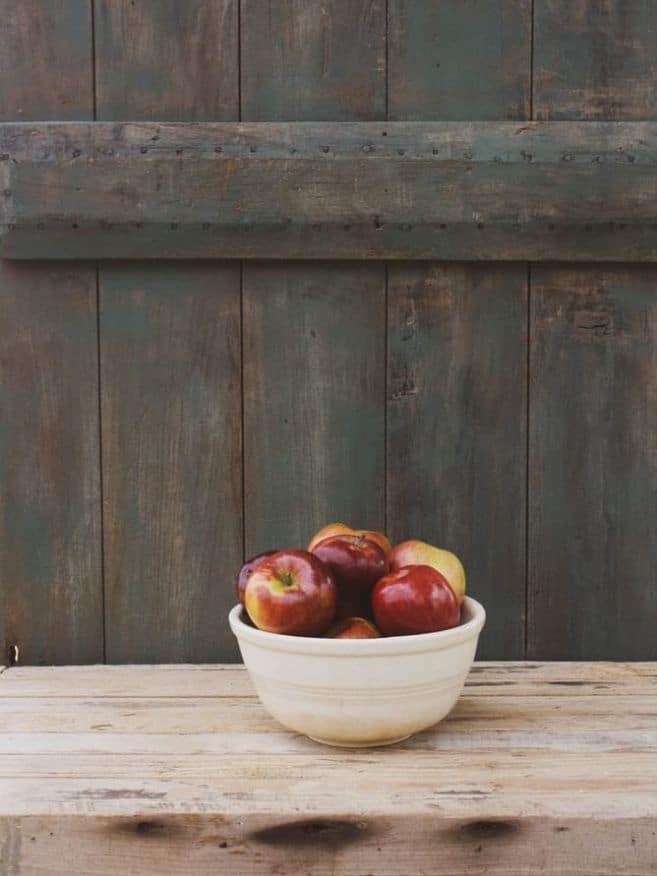

do you need to remove the seeds from your apple cores?
If you’re making apple cider vinegar from apple scraps – which you totally should because #EndFoodWaste – you might be wondering if you need to remove the apple seeds.
You certainly can if you’re feeling overly cautious, but you won’t be crushing them, grinding them, ingesting them, or even leaving them in the mixture. And the average person would have to eat over 100 seeds to get sick. (source)
does homemade apple cider vinegar need a preservative?
Vinegar is a preservative, but until it’s fully converted, you do need to keep a close eye on it to ensure all of your apples stay submerged. If the apples hit the air, they can grow mold, and if they do, your batch will be bad.
If you want a foolproof hack, check out the last faq below!
how do you use your homemade apple cider vinegar?
Here are 7 uses for homemade vinegar. It’s one of the most versatile products in my home!
- salad dressing
- homemade pickles (I love pickled green beans and red onions!)
- I use a splash when cooking rice for a little bit of acidity
- A splash for a produce wash
- Hair rinse to remove any excess build up
- In homemade cleaning products
- A natural weed killer
P.S. A homemade vinaigrette is perfect for topping this spinach, apple, and walnut salad.
can apple cider vinegar go bad?
Good news — your homemade vinegar will last pretty much forever! It’s a fermented product, and the ‘expiration’ date on most vinegars you buy in store is completely arbitrary. According to the vinegar institute: “Because of its acid nature, vinegar is self-preserving and does not need refrigeration.” It’s just one more reason why this is the best apple cider vinegar!
how to make apple cider vinegar process faster?
Ok, so this is my FAVORITE vinegar hack. Whether you have homemade apple cider vinegar with the mother or you still have some store bought – you can create an eternal fountain of vinegar.
If your vinegar is in a jar with a small opening, transfer it to one that’s a bit larger. It will help it ferment a bit faster.
Fill the jar with half apple cider vinegar with the mother and the other half with water. Place a small swatch of cloth over the lid with a rubber band, and in about a week or two, you’ll have a full bottle of ACV. It really is that easy!
Additional notes: I keep the bottle just like you see below with the swatch of cloth on top and keep the vinegar constantly going, and my bottle has been going strong since 2017.
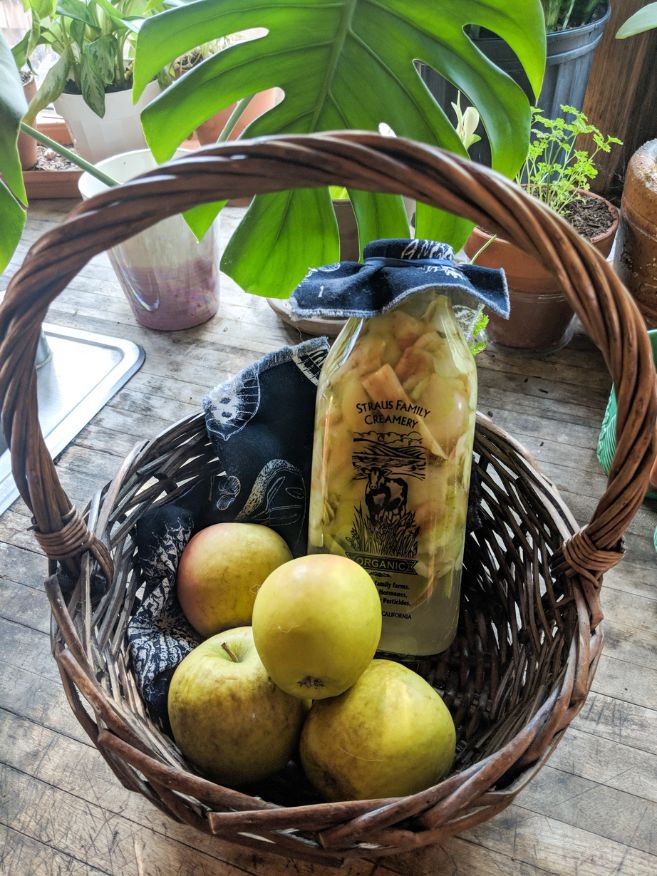

Your vinegar should be bright and well…. vinegary. If it’s overly sour or moldy, it’s not good.
This same process can also be used to turn old red wine into red wine vinegar, and you can get my tips for that in my post How to Use Up Your Leftovers from Thanksgiving.
Now that you have learned how to make apple cider vinegar and we have answered, “can apple cider vinegar go bad?” you are ready to make your first batch!
Would you try making your own apple cider vinegar?
[ad_2]
Source link
